Hot on the heels of what was surely disappointing news for Maris Jansons and Munich’s musical community – that, despite their protracted efforts, the Bavarian Radio Symphony Orchestra will not be getting a much needed new hall – came the triumphant announcement that Sir Simon Rattle, appointed as London Symphony Orchestra’s new chief, has secured a commitment from the city’s mayor to seriously investigate the possibility of a new concert hall for London’s top ensemble. Rattle has brought his political capital to bear right out of the gates – for good reason and while all eyes are on him. Despite the loud assertions of pundits who prefer to question his motives, this isn’t just a case of the new music director throwing his weight around. Sir Simon Rattle is instead pointing out the elephant in the music room: London, a concert capital with an embarrassment of riches measured in great orchestras and visiting performers, has somehow managed in all its centuries of legendary activity not to erect a single great concert venue the likes of Carnegie Hall, The Royal Concertgebouw, Musikverein, or even anything approaching the grandeur of St George’s Hall in Liverpool or Usher Hall in Edinburgh.
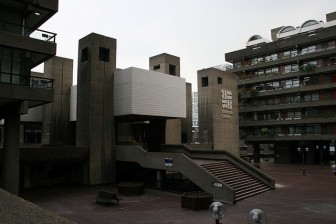
Each of the city’s major orchestras, besides being important and accomplished in its own right, supports and nourishes the rich ecosystem that is London’s classical music community. We can draw an analogy to the many museums in London – and we’ll do so despite the increasingly popular, pejorative reading of the word museum. Here we are using it as a wondrous term, connoting a sanctuary for our vast and beloved tradition. The London Symphony Orchestra (LSO) is like the British Museum. It is the repository of the best knowledge collected within the lifetimes and experience of its musicians, arguably standing a head above others in stature for its longevity of scope, its relationships with the world’s greatest conductors, and the breadth of its output. For the LSO not to have a proper and fitting home is akin to the British Museum existing only as a traveling collection.
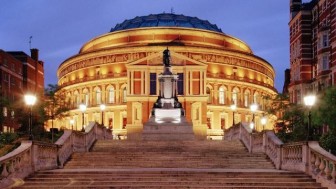
So what, then, of the concert halls that London does have? The Barbican Center is a colossal, concrete bunker and the Royal Albert Hall, though storied and beautiful, has no acoustics to speak of. The Royal Festival Hall in the Southbank Center, meanwhile, combines the most lamentable attributes of both. Certainly, musical life in London could and would go on without a new hall. But so will many of the institutions and traditions we treasure continue to sputter along despite our neglect until tarnish and inertia overtake them and we become accustomed to decayed and hollow versions of the vibrant and living things we once loved. Why should London’s most prized assets, including both the LSO and the city’s musical life itself, be left just to “go on” this way? A proper concert hall represents an important piece of the city’s cultural puzzle, still waiting to be solved, and, equally meaningful both to London and its famed orchestra, an opportunity for renewal.
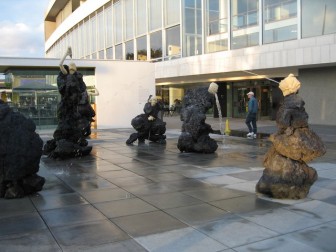
So, if we were to agree about the necessity of such a grand project, what would we build and where would we build it? Is it too early to even open such a discussion? Certainly not – for, as we have often seen, the political jockeying to win such a project begins immediately and dominates everything that happens behind the scenes. Too often the end result of these Machiavellian maneuverings leaves many disappointed observers wondering, “All that money…how in the world did they come up with that?”
At the Future Symphony Institute, we have come to understand that the most important consideration for a concert hall, beyond its acoustics, is the relationship it establishes between the orchestra, its patrons, and their community. The concert hall is the orchestra’s home – the space into which it invites the public as its guests, the setting in which it extends its hospitality and friendship. But it is also the face with which the orchestra looks out upon its neighbors and through which it participates in the conversation of settlement that invests a place with the meaning of home. Its physical presence creates an immediate and lasting impression that communicates directly to the community just what the orchestra believes about what it has to offer and what it perceives to be its role in the life and conversation of the community. For this reason a concert hall, in our estimation, can be either a major driver of or a serious impediment to demand for classical * concerts.
THE HALL AS A HOME
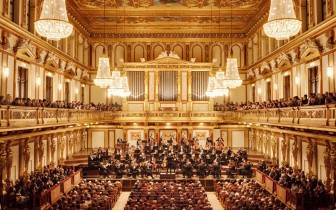
Home is an expression of both who we are and where we belong. We mark the places where we belong – the spaces we call home – with those things that reflect how we understand ourselves, who we aspire to be, and how we want others to know us. And we gather these clues, consciously or not, whenever we enter someone’s home – gather the myriad, little, aesthetic decisions and with them assemble a portrait, however astute or incomplete, of the person who made them. The privilege of being invited into a person’s home is the privilege of glimpsing their soul. In a very real way, the hall is the orchestra’s home; everything about it and within it should attest to the orchestra’s deepest convictions about itself and about classical music.
For instance, while it’s something of a fad to build halls that resemble spaceships, there is nevertheless a general lie and an injustice in doing so. And that’s because classical music does not come to us from outer space, or even from the future. It is not created by robots or by alien beings we cannot approach or begin to understand. It comes to us instead from a very long and very human tradition – from people we would recognize, people we can approach and come to know intimately through their music. It’s not slick, plastic, or high-tech. On the contrary, it still relies on a legacy of meticulous, human craftsmanship and unplugged, acoustic instruments. The hall should be the embodiment of classical music’s character: it should above all feel human, feel familiar, feel knowable, and feel intimate as often as it feels exalted.
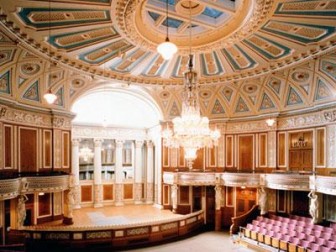
Likewise, to reduce classical music simply to pretty sounds accumulated accidentally over the centuries is to ignore the fact that it revolves around ideals of beauty drawn from the innate order of the universe, and that we recreate that order through music painted on a canvas of time. It’s as great a contradiction to bury classical music in a disorienting and convoluted labyrinth – however shiny or pretty – as it is to stage it in a spaceship. By building such a home for itself, whether it realizes it or not, the orchestra risks suggesting to its patrons that its music is more complicated than it needs to be and – even worse – that they might not “get it.” Every little aesthetic clue in and about the hall inevitably tells its guests not only what the orchestra thinks about itself, or what it wants them to think about classical music, but also – and perhaps most importantly – what the orchestra thinks of them.
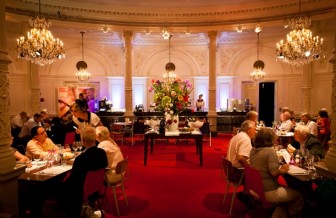
A hall is more than a holding pen and an acoustic space. It is a place in which its guests, too, must come to feel that they belong. Though they will likely never come to know each member of the orchestra, they will nonetheless feel like they know the orchestra as a whole – as if it is a friend to whom they relate, and with whom they while away their evening hours in a sort of intimate communion. In the symphony hall, guests sense the orchestra as a neighbor into whose home they have been invited. The hospitality they experience there can inspire a friendship and gratitude that connects directly to a sense of belonging. And an orchestra can only be successful to the extent that those friendships and that gratitude manifest themselves in the charitable donations of patrons and in the pride and enthusiasm with which they, in turn, offer the orchestra’s hospitality to their own friends and neighbors – especially to those who have not yet come to know this sense of belonging in the symphony hall. The most important contribution a proper hall might make to an orchestra’s success is its propensity to cultivate deep and lasting friendships.
THE HALL AS A FACE
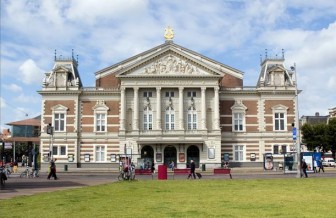
Every act of architecture is an enduring act of imposition wherever it’s committed. Whether a monument, a hall, a home, or an office, every building becomes part of the community upon which it’s imposed. While not everyone will find reason to engage directly with it, they will nevertheless live in its shadow. They must inevitably despair or delight in its company forever after – or at least as long as it remains standing among them. It’s the realization born of this fact, the realization that we’re all “in it together”, that tempers our adolescent urges toward defiant self-expression.
Just as the youth, who thinks little of imposing his window-rattling, musical misadventures upon his neighbors, eventually in adulthood comes to appreciate the reciprocal consideration that obliges him not to offend his neighbors with his noise, so we become sensitive to the plight of our neighbors the more completely we understand our situation to be bound up with theirs in the identity of community. This is the foundation for the manners that make good neighbors. And this is what makes the homeowners’ associations of America’s transient suburbs as perennial as they are reviled: they are an attempt to enforce good manners in the absence of genuine neighborliness from which the sentiment naturally springs.
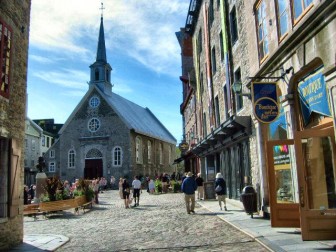
Our home is for us a private sanctuary, but it is also part of a larger, collective sanctuary. And we feel this larger place as home too, inhabited as it is by our many neighbors, probably none of whom we chose. In this larger place called home – in our community – we are only one voice of many. And each building, like each neighbor, looks out upon the community with its own face and participates in the ongoing conversation of settlement with its own voice. Like neighbors themselves, these buildings do not always echo each other or even agree, but because they are architectural reflections of their very human subjects, their differences too are tempered by membership in the community. They attune to each other and relate to each other in the community’s natural and never-ending process of becoming home. The result is an organic harmony of individual voices, and this is what we sense in the world’s oldest and most beautiful cities and neighborhoods.
This should be especially interesting to us when considering the case of concert halls. The blending of a chorus of individual voices into harmonious polyphony is precisely the hallmark and heritage of our musical tradition. It would be the most natural thing imaginable for an orchestra to build for itself a hall that sits comfortably in its community, shoulder-to-shoulder with its neighbors, that participates in the act of settlement by accepting its role in the compromise and conversation that makes a place home and strangers neighbors. But how often do we see halls built like this today?
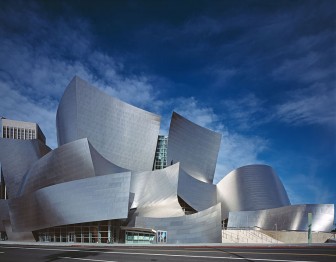
It seems as though the adolescent obsession with individualism now nearly always trumps neighborliness. Too often the modern hall is designed as a solipsistic monolith that rises faceless from a shallow sea of concrete somewhere off the shore of its community. It shuns its neighbors – it does not participate and does not relate. It does not invite the passerby inside with welcoming familiarity that reads as approachability. In fact, should the passerby wander into its remote realm, it’s far too likely that it won’t even be clear to him where the entrance might be. The modernist hall stands defiantly as a foreboding monument to its architect’s ego, and perhaps to the colossal blundering of the planning committees who mistook this emphatic statement of irrelevance for its literal opposite.
But a concert hall is not built for planning committees or for architects. It is built for the ordinary people who will become its neighbors, the music patrons who will become its friends, and the orchestra for whom it will become a face. It must communicate the inspiration and the achievement of the composers and musicians that live within it, but it must speak of those things in the local language and in tones of civility. It must enfold not only concert spaces of varying size, but also spaces for communion, where people can come together and discover neighbors, and spaces for education, where they can come together and discover music. This last point deserves to be stressed: given the incredible responsibility orchestras have to impart their legacy to future generations, it’s imperative that their halls should enfold facilities that reflect both the central and permanent nature of their educational role in the community.
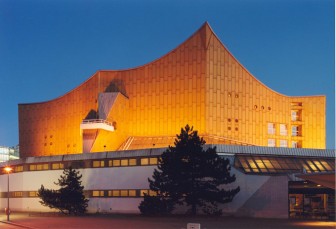
One more word on the idea of the concert hall as the orchestra’s face: It is important for the LSO to remember that a concert hall really does become an orchestra’s identity – what we might otherwise called “brand” in the commercial world. In the case of orchestras, branding is often a bit of an abstraction since visually one orchestra isn’t very distinct from the next in the way that a Lamborghini is distinct from a BMW. They have logos, to be sure, but since concerts aren’t purchased in stores off a shelf, the logo doesn’t become invested with the weight and power associated with physical goods. In some cases, the music director becomes the “face” or identity of a group. But that becomes a problem when the conductor moves on or even passes on. For instance, Herbert von Karajan was synonymous with the Berlin Philharmonic (BPO) for decades, and despite the equally important leadership of his successor Claudio Abaddo, the orchestra was challenged to assert its autonomy and identity through another focal point following its contentious breakup withKarajan. In recent decades, the BPO has adopted its own iconic 1962 Cold War era hall by Hans Sharoun as its face. And now that is precisely how it is known. We can cite other examples where mentioning the orchestra calls to mind immediately its hall and creates for us a vivid association with the character that we recognize in it: Boston Symphony, Royal Concertgebouw, Vienna Philharmonic, New York Philharmonic, LA Philharmonic.
LONDON’S CASE
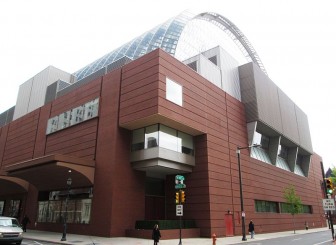
What we will also point out, probably to the consternation of dear Sir Simon’s modernist, downright futuristic leanings, is that LSO’s identity is wrapped up in its connection to a rich and storied past – a great tradition stretching back to the British Empire. There are many great orchestras in London. What sets LSO apart is its pedigree, its traditions embodying the collective experience of having played with so many of the world’s greatest conductors. It is, as I said, the British museum of London orchestras, not the Tate Modern. Therefore, it would do well to position itself among its true peers – Vienna, Amsterdam, and Boston, with their profound connections to the history of classical music. (Philadelphia could have been included here, except that it abandoned its connection to its illustrious past when it moved into the Kimmel Center – what a passerby might for all the world suppose is just another corporate office building on Market street. Philadelphia is a cautionary tale.) To this end, it is most regrettable that Edwin Lutyens never designed for LSO a concert hall that would have rightfully stood among the other great halls of the world.
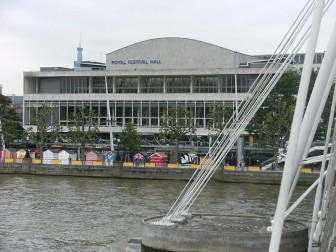
London is a city beloved by residents and cultural tourists for both what it has retained and what it has become over the centuries. But sadly, what the air raids of WWII didn’t manage, the modernists are now pulling off with the banishment of traditional architecture. Yet one would be severely challenged to find a tourist who came to London to see the Gherkin, the Barbican, or Southbank. Nor is it at all surprising or unusual that we see in the choices people make about where to live in London that traditional areas are much more desirable and therefore much more valuable than the cold, faceless clumps of glass and steel that one always comes across with disappointment when walking through town. Even the modernist architects, as architect Léon Krier memorably points out, usually live in gorgeous, traditional homes, leaving their glass and steel monstrosities for everyone else. Public vice, private virtue, as he says.
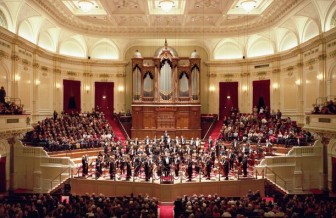
We can imagine at this point that LSO will have a choice between two halls: let’s say either a Royal Concertgebouw of Amsterdam or a Walt Disney Hall of Los Angeles. That may seem like an absurd scenario – a false choice, really – but as long as traditional architecture remains a clear and viable option and modernist “starchitects” continue to be driven by an adolescent urge to challenge and shock everyone, then that might be the very scenario we are looking at. That brings us to another important consideration. It may be crushing to many in the modernist Kulturekampf, but the ideal source for funding for London’s new hall will likely be private. And for that to happen, there will have to be a careful alignment of branding.
For example, should a bank like Barclays or UBS, who each have a long track record of sponsorship of classical music ventures, be interested in the project, they would undoubtedly require a building that came with a great deal of prestige attached to it, and one that was meant to be permanent. George Szell used to disparage “contemporary” music by dismissing it with a laugh, calling it “temporary” music. There is always truth in a joke, however, and so it is in the case of contemporary architecture, too. Feats of modernist architecture are usually built with the idea of standing for fifty years – an act of mercy on the one hand, and an act kicking the can down the road for the next generation on the other. But traditionally designed and constructed halls, built as they are with the architectural language and techniques that have endured throughout the ages, last for a very long time. They are meant as permanent places for a permanent music.
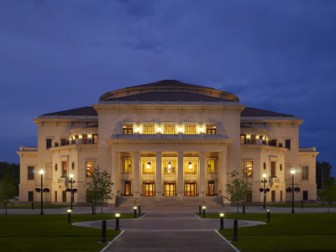
We are greatly encouraged by the recent decision made by the Royal College of Music to engage John Simpson for its expansion and renovation. Simpson’s plans are beautifully designed to enhance the original and historic Victorian building rather than repudiate it with a glass dagger as is so popular with today’s raging, international, design fashionistas (see Dresden’s Museum of Military History or the Louvre’s Pyramid if somehow nothing comes to mind). There are also wonderfully thoughtful and successful halls being designed today by David Schwarz’s award-winning firm in Washington DC. We hope to see more of them.
In subsequent writings here, we will look at the practical implications that arise from these issues and we’ll examine others, including the question of a building site, as they unfold. More importantly, we’ll look for the insight of those who know these challenges better than we. We are here to argue not only that both the LSO and London itself need and deserve a new concert hall that is fitting for the future of the city’s prestigious musical life, but that they need to imagine it as a place that makes sense for the sake of its own success – that it should be a beautiful and harmonious part of the face and community of London, not a thumb in its eye and a middle finger to everyone else.
Endnote
* Here, as always, we use the term “classical” with a small c to denote the long tradition of Western art music. When we refer specifically to the music composed during the European age of “Enlightenment”, we will use the term “Classical” with a capital C.
